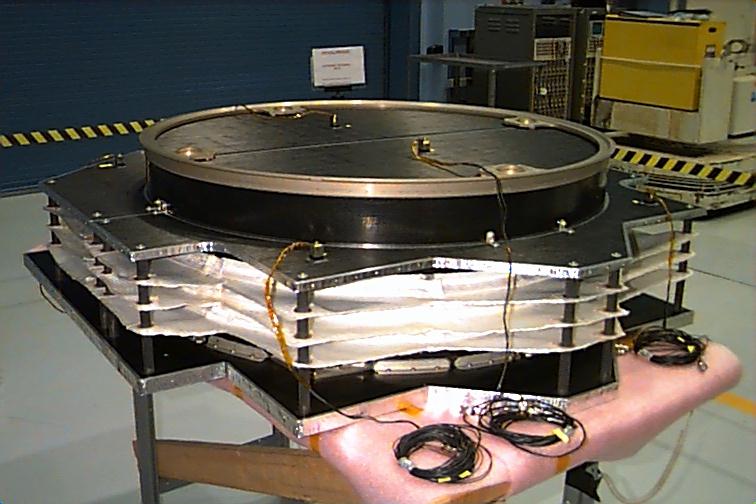http://www.usatoday.com/tech/science/columnist/vergano/story/2011-09-25/meteors-satellites/50531542/1 wrote:
Meteoroid impacts may explain some satellite mysteries
By Dan Vergano, USA TODAY, 9/26/2011
<<With one of NASA's defunct satellites crashing down to Earth this weekend, forgetting our more commonplace visitors from space, meteors, might be easy. But bear in mind that roughly 100 tons of space dust and rubble, or meteoroids, rain down on Earth every day. And that before the space agency's Upper Atmosphere Research Satellite (UARS) was allowed to take a final plunge to keep it from cluttering space, something smacked into the spacecraft four years ago, hard enough to dislodge four pieces from its frame. "We create space junk, so we're obligated to get rid of it. But we're a little bit oblivious to meteoroids," says aerospace engineer Sigrid Close of Stanford University. "And we can't go out and kill the comets that cause meteoroids."
Meteor showers look pretty in the nighttime sky, caused by space rocks as big as 30 feet across streaking across the heavens. But Close and colleagues have diagnosed a previously unsuspected way that even the humblest bit of space dust — as small as four-thousandths of an inch across — may end up zapping satellite electronics. These bits of comets and asteroids routinely swoop down on Earth at speeds ranging from 24,600 to 160,000 miles-per-hour, much faster than the orbital zip of most satellites.
For fans of categorizing stuff, I should probably mention that meteoroids are what space rocks are called when they are flying through space, meteors are what they are called when they are burning through the sky, and meteorites are what they are called after they land. Any meteoroid much bigger than 30 feet across is generally dubbed by astronomers as an asteroid, or else a comet.
"
Most of the time we think of a bullet hole left behind in the spacecraft (from meteoroids)," Close says, and impacts do abrade satellite surfaces and make holes. "
But these things are traveling so fast that they leave a little [plasma] cloud behind when they hit," she adds. "
We're trying to figure out what that can do."
Some evidence that meteoroid strikes cause bad things to happen comes from the August Perseids meteor shower. The Perseids seem to have discombobulated the European Space Agency's Olympus satellite in 1993 and may have done the same to Landsat V in 2009. Two Japanese satellites, ADEOS II and the ALOS spacecraft, have lost power amid other meteor showers. And the Jason-I satellite was knocked 11 inches sideways by something in 2002 that boosted the current in its solar power cells for its next three orbits.
As Close and colleagues reported in a Journal of Geophysical Researchstudy last year, spacecraft designers have suspected since 1963 that high-speed meteoroid impacts with spacecraft created little clouds of electrified gas, or "plasma." Exactly how this screws up satellites isn't clear, but the team proposed a mechanism in the paper, a so-called electromagnetic pulse, a sudden oversized outburst of electrical activity.
In doomsday thrillers, nuclear bombs create hefty electromagnetic pulses that overload the nation's power grid. In the study, and in experiments presented this summer by Close's student, Nicolas Lee, at an American Institute of Aeronautics and Astronautics meeting in Honolulu, the engineers looked at whether meteoroids would generate small electromagnetic pulses on satellites they hit.
Even before Sputnik ascended into orbit in 1957, engineers had worried about impacts from meteoroids, leading to the development of so-called
Whipple shields (invented by Harvard astronomer
Fred Whipple in 1947), layers of aluminum strips that catch particles before they penetrate satellites. "We often think of satellites as shielded, even from electric effects," Close says. "But if there is anything electronic reaching into the spacecraft, even a transmitter, it isn't." So, in the experiments, the team accelerated tiny iron particles to meteoroid speeds and shot them at metal targets that simulated satellite surfaces. On some tungsten and aluminum used in satellites, they found plasmas triggering 3-microsecond electrical outbursts after an impact. "But it really depends on the materials," Close says. Unfortunately, the plasmas seem to have a sweet tooth for solar cells and for materials found in the stabilizing gyroscopes of spacecraft, she says, "but we are still figuring this out." On the plus side, she adds, simply knowing the electronic effect is happening might point the way to better shields.
"The current space environment is growing increasingly hazardous to spacecraft and astronauts," said Donald Kessler, retired head of NASA's Orbital Debris Program Office, in a statement on a recent National Research Council panel report he headed. The report called for NASA to start studying direct removal of old rocket boosters and derelict spacecraft from orbit, and keeping better track of electrical anomalies in orbit.
The threat to satellite computers comes not just from old bits of spacecraft, but also from atomic particles moving at nearly light-speed called cosmic rays, and from electric fields in the Earth's upper atmosphere energized by solar storms. Above "
Low Earth" orbits roughly 100 to 1,200 miles high, "
meteoroids really take over as the threat," says Close, who was on the NRC report panel.
The best way to get a handle on electromagnetic pulses from meteoroids frying satellites might be sending up
a sacrificial victim, a small "CubeSat" equipped with a metal meteoroid screen and the same detectors used in the experiments. Until then, satellite operators will have to content themselves with turning their spacecraft sideways during meteor showers, she says. "The most dangerous place for a satellite is out in front of the Earth as it orbits the sun, plowing into whatever is out there," she says. "We really have a lot to learn about meteoroids."
 Perseid Below
Perseid Below